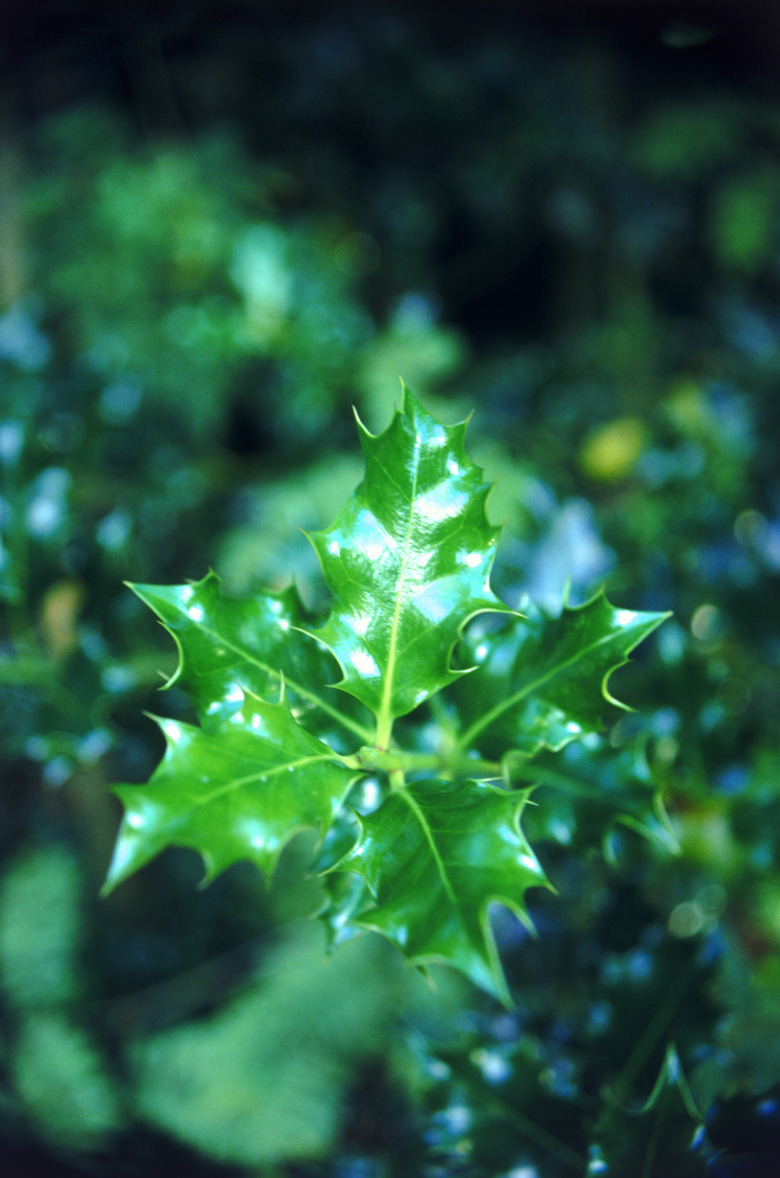How To Transplant A Holly Bush
While it is not recommended that you transplant an already thriving holly (Ilex spp.) bush, it is possible to move an existing holly bush to a new location, if the need arises. Holly bushes are relatively hardy plants that can survive a transplant as long as the proper transplanting procedures are followed. Before moving a holly bush it is always a good idea to scope out the new location to ensure that it meets the holly's growing requirements: partial shade to full sun, with well drained, acidic soil and eastern exposure.
Step 1
Step 1
Wait until the early fall to root prune the holly bush in preparation for a spring move. The easiest way to root prune is a process called spading. To spade, use a garden spade and dig into the earth all the way around circumference of the bush. Push the spade into the earth at a depth of 12 to 15 inches.
- While it is not recommended that you transplant an already thriving holly (Ilex spp.)
- Before moving a holly bush it is always a good idea to scope out the new location to ensure that it meets the holly's growing requirements: partial shade to full sun, with well drained, acidic soil and eastern exposure.
Step 2
Step 2
Apply mulch around the base of the bush to conserve the moisture of the soil during the winter and let the plant stand until the following spring. Root pruning prompts a network of small roots to develop for a more compact root ball that holds together better at transplant time.
Step 3
Step 3
Wait until spring and dig out the plant, using the cut made during spading as a guide. Dig out the root ball, thoroughly water it to keep it moist and wrap it in a burlap sack so it doesn't fall apart during the move.
Step 4
Step 4
Dig a new hole in a pre-selected location that is suitable for holly growth. The hole should be the same depth as the holly was growing originally and twice the diameter of the plant's root ball.
Step 5
Step 5
Move the holly bush using a wheelbarrow to avoid strain on the plant and to keep the root ball intact.
- Apply mulch around the base of the bush to conserve the moisture of the soil during the winter and let the plant stand until the following spring.
- Move the holly bush using a wheelbarrow to avoid strain on the plant and to keep the root ball intact.
Step 6
Step 6
Remove the burlap from the root ball and settle it in the new hole. Use soil from the existing location of the bush to fill the new hole and water the newly transplanted holly thoroughly.
Step 7
Step 7
Apply 3 inches of mulch around the base of the holly bush. This ensures the soil stays damp.
Tip
Different holly varieties have different hardiness zones. English holly (Ilex aquifolium), Chinese holly (Ilex cornuta) and "Nellie R. Stevens" (Ilex "Nellie R. Stevens") are all suitable for U.S. Department of Agriculture plant hardiness zones 7 through 9. Japanese holly (Ilex crenata) is hardy from USDA zones 5 through 7, American holly (Ilex opaca) is suitable for USDA zones 5 through 9, while yaupon holly (Ilex vomitoria) grows in USDA zones 7 through 11.
Warning
Don't apply fertilizer to the soil of a newly moved holly bush as this causes burns on newly grown roots.
Warning
Holly is considered moderately toxic, though not life threatening, if ingested.
Things Needed
- Spade
- Mulch
- Water
- Burlap sack
- Wheelbarrow
- Shovel
